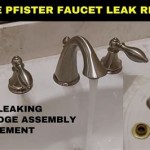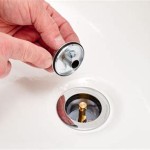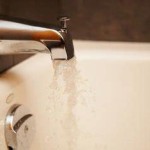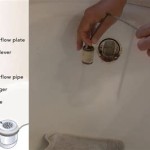Repairing and Preventing Chips in Plastic Bathtubs
Plastic bathtubs, typically made of acrylic or fiberglass reinforced plastic, are a common fixture in many homes due to their affordability, lightweight nature, and ease of installation. However, these materials are susceptible to chipping, which can detract from the aesthetic appeal of the bathroom and potentially lead to further damage if left unaddressed. Understanding the causes of chips and knowing how to repair and prevent them is essential for maintaining the longevity and appearance of a plastic bathtub.
Chips in plastic bathtubs can arise from various sources. Impact from dropped objects, such as heavy bottles or tools, is a frequent culprit. The force of the impact can cause the relatively brittle surface of the plastic to crack and chip. Another common cause is the gradual wear and tear from daily use. Scouring pads and abrasive cleaners, while effective at removing grime, can gradually erode the surface of the tub, making it more prone to chipping. Furthermore, temperature fluctuations, especially extreme changes, can stress the plastic material, contributing to weakening and eventual chipping. Even seemingly innocuous actions like repeatedly placing hard objects, like metal razors or shampoo bottles with hard edges, in the same spot can contribute to minor surface damage over time.
Recognizing Different Types of Bathtub Materials
Before attempting any repair, it's crucial to identify the type of plastic your bathtub is made from. The two most common materials are acrylic and fiberglass reinforced plastic (FRP). Acrylic bathtubs are made from a sheet of acrylic that is vacuum-formed into the desired shape. They are generally more resistant to scratches and chips than fiberglass, but can still be damaged. Fiberglass bathtubs consist of layers of fiberglass matting bonded together with resin. They are more flexible than acrylic tubs, but are also more prone to cracking and chipping, especially if the gel coat (the protective layer) is compromised. A simple test to identify the material involves tapping on the tub's surface. Acrylic tubs tend to produce a dull, solid thud, while fiberglass tubs will sound hollower and more resonant. Knowing the material will inform the choice of repair kit and the appropriate techniques to use.
Regardless of the material, a chip exposes the underlying structure of the tub. In the case of acrylic, this may simply be more acrylic. For fiberglass, it reveals the fiberglass matting and resin. This exposure makes the area susceptible to water damage, which can lead to delamination of the fiberglass layers or staining of the acrylic. Additionally, a chipped area can become a breeding ground for mold and mildew, further compromising the tub's integrity and posing health risks.
Repairing a Chip in a Plastic Bathtub
Repairing a chip in a plastic bathtub is a manageable task that can be accomplished with readily available materials. Several DIY repair kits are specifically designed for this purpose. These kits typically include a filler compound, hardener, sandpaper of varying grits, polishing compound, and color-matching pigments. The repair process involves several key steps, each requiring careful attention to detail.
The first step is thorough cleaning of the damaged area. Use a mild detergent and water to remove any dirt, grime, or soap scum. Ensure the area is completely dry before proceeding. Next, carefully roughen the edges of the chip with fine-grit sandpaper. This creates a better surface for the filler compound to adhere to. Avoid sanding beyond the immediate area of the chip, as this can damage the surrounding finish. Once sanded, clean the area again with a solvent like isopropyl alcohol to remove any sanding dust.
Mixing the filler compound according to the manufacturer's instructions is crucial. The correct ratio of filler to hardener ensures proper curing and bonding. Use a small mixing stick or spatula to thoroughly combine the two components. Some kits include color-matching pigments to help blend the repair with the existing tub color. Add small amounts of pigment until the desired shade is achieved. Be aware that the color may change slightly as the compound cures.
Apply the mixed filler compound to the chipped area, using a small spatula or putty knife to press it firmly into the void. Overfill the chip slightly, as the compound will shrink as it cures. Remove any excess filler from the surrounding area. Allow the compound to cure completely, following the manufacturer's recommended drying time, which can range from several hours to overnight. Avoid using the bathtub during this time to prevent disturbing the repair.
Once the filler has cured, begin sanding the repair to create a smooth, flush surface. Start with a coarser grit sandpaper (e.g., 400 grit) to remove any excess filler and level the repair with the surrounding surface. Gradually move to finer grits (e.g., 600, 800, 1000 grit) to refine the finish and remove any sanding marks. Be patient and apply even pressure to avoid creating dips or unevenness. After sanding, use a polishing compound to restore the shine to the repaired area. Apply the compound with a soft cloth and buff until the surface is smooth and glossy. Clean the area thoroughly to remove any polishing residue.
Preventative Measures to Avoid Future Chips
Prevention is always better than cure. Several simple precautions can significantly reduce the risk of chips in plastic bathtubs. One of the most effective measures is to avoid dropping heavy or sharp objects into the tub. Consider using a non-slip mat to cushion the impact of dropped items. Store toiletries in a secure location, away from the edge of the tub, to prevent them from falling. Another crucial preventative measure is to use non-abrasive cleaners. Abrasive cleaners and scouring pads can gradually erode the surface of the tub, making it more susceptible to chipping. Opt for mild detergents or cleaners specifically designed for acrylic or fiberglass bathtubs. Regularly cleaning the tub will also prevent the buildup of grime and soap scum, reducing the need for harsh cleaning agents.
Controlling water temperature is also important. Avoid extreme temperature fluctuations, as this can stress the plastic material. When filling the tub, start with lukewarm water and gradually adjust the temperature to your desired level. Avoid pouring boiling water directly into the tub. Protecting the tub surface with a sealant can also provide an extra layer of protection against chips and scratches. Apply a sealant specifically designed for acrylic or fiberglass bathtubs according to the manufacturer's instructions. Reapply the sealant periodically, as it will wear down over time.
Regular inspection of the bathtub is another proactive step. Periodically examine the surface for any signs of damage, such as small cracks or scratches. Addressing these issues promptly can prevent them from developing into larger chips. If you notice any cracks, repair them immediately using a crack repair kit. Small cracks are easier to repair than larger chips and will prevent water from seeping into the underlying structure of the tub.
Finally, consider the overall bathroom environment. Maintain proper ventilation to reduce humidity, which can contribute to mold and mildew growth. Mold and mildew can weaken the tub's surface, making it more prone to damage. Ensure the bathroom is well-ventilated by using an exhaust fan or opening a window after showering or bathing.

Diy Bathtub Repair

Fiberglass Tub Repair Service S And Holes Filled

Bathtub Surface Repair Chicago Tub Reglazing

Diy How To Fix A Chip In Acrylic Bath Bathtub Or Shower Tray Easy And Method

Bath Chip Repair Highest Quality Bathtub Service Call Now

Napco Bathtub Inlays Ltd

Acrylic Bath Repair Kit Bathtub

S Chips And Holes Diy Bathtub Shower Repair Tips

Fiberglass Tub Repair Or Replacement America Refinishing Pros

Bathtub Surface Repair Chicago Tub Reglazing
Related Posts








